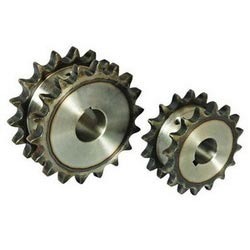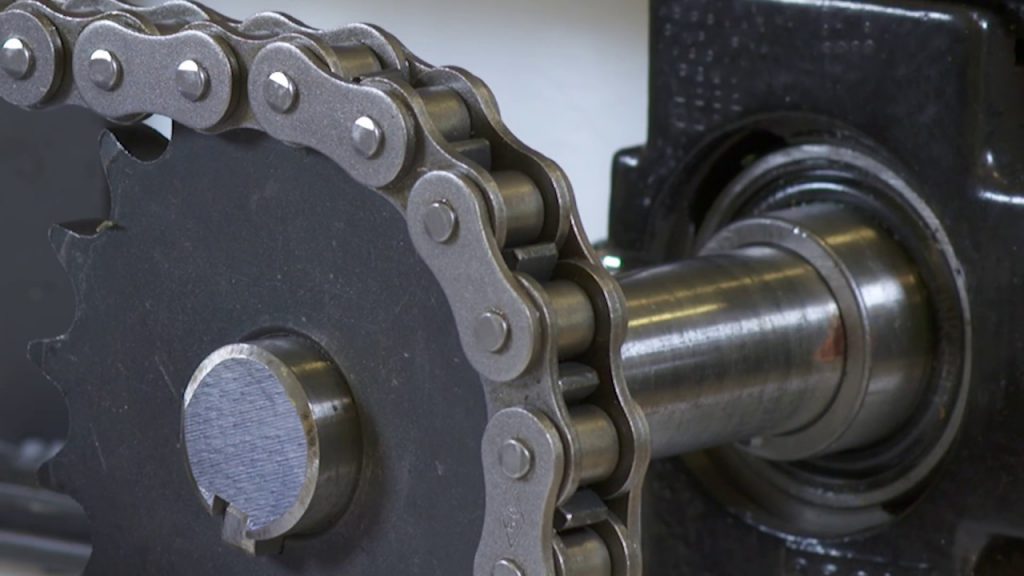Product Description
T10 Aluminium Sprocket Timing Belt Pulleys Toothed Pulley for pulley drive system
1) Warranty: our timing pulley’s quality is very good and with ensurance within 1 year, when you receive the products and find quality problems, we promise you could return it back and free maintenance.
2) Drawings: please send you timing pulleys’ drawings to us to get the best quotation; If you have no drawings, then we could work out CAD drawings and the best quotation to you ASAP.
3) Sample: we accept 1 piece sample’s order, we could do samples until you’re satisfied.
4) Confidentiality agreetment: Strictly adherence to client confidentiality agreetment for timing pulleys.
| Product Description |
|
Product Name |
Timing Belt Pulley | |
| Teeth profile | Trapezoidal toothed | MXL, XXL, XL, L, H, XH, XXH |
| T-toothed | T2.5, T5, T10, T20 | |
| Arc toothed | HTD3M, HTD5M, HTD8M, HTD14M, HTD20M, Gt2, Gt3, Gt5 | |
| S-toothed | S2M, S3M, S4.5M, S5M, S8M, S14M | |
| Parabolic-toothed | P2M, P3M, P5M, P8M, P14M | |
| Y-toothed | G2M, G3M, G5M, Y8M | |
| Teeth Quantity | 10-150 teeth or customized | |
| Inner Bore | 2-200mm H7 precision or customized | |
| Belt width | 4mm, 6mm, 9mm, 10mm, 12mm, 15mm, 20mm, 25mm, 30mm, 40mm, 50mm, 1/4”, 5/16”, 3/8”, 1/2”, 3/4”, 1”, 1.5”, 2”or customized | |
| Accessories | We can provide the service of assembling setscrews, bearings, shafts or taper bush | |
| Surface treatment | Anodize,Black Oxide,Phosphate and Galvanization | |
| Drawing Format | Timing belt pulley cad drawing,timing belt pulley UG drawing,Timing belt Pulley Soliwork drawing,Timing Pulley PDF drawing | |
What is timing pulley?
Timing pulleys are specialized pulleys that have either teeth or pockets around the outside diameter of the pulley body. Timing teeth engage holes in the metal belt, while timing pockets engage drive lugs on a belt’s inner circumference. These teeth or pockets are used only for timing, not for power transmission.
How timing pulleys work?
The synchronous wheel transmission is composed of an endless belt with equal-spaced teeth on the inner peripheral surface and a pulley with corresponding teeth. During operation, the toothed teeth mesh with the tooth grooves of the pulley to transmit motion and power, which is integrated with the belt. A new type of belt drive with the advantages of transmission, chain drive and gear transmission.
What is gt2 timing pulley?
2mm pitch GT2 Pulley. The GT2 or 2GT Tooth Profile timing pulley prevails in the 3d printing hobby cause the Round tooth profile brings high precision of non-backlash, were known as today’s Reprap Pulley.
What is a timing pulley flange?
Timing pulley flanges are used to maintain belt contact with a timing pulley in power transmission applications.Timing pulley flanges are manufactured to fit timing pulleys of the same pitch and size. The dimensions of a pitch, including the mating flange, are specified by the number of grooves.
What are synchronous belts used for?
The trapezoidal tooth profile first used on synchronous belts is recognized as standard. Belts with this configuration are commonly used in machine tools, textile machinery, home appliances, business equipment, and as camshaft drives in engines.
Note:Please confirm you need teeth profile, teeth quantity, belt width, bore diameter, quantity and type (please refer below drawings) to get our the most complete CAD drawings and the best quotation.
Related Products
/* January 22, 2571 19:08:37 */!function(){function s(e,r){var a,o={};try{e&&e.split(“,”).forEach(function(e,t){e&&(a=e.match(/(.*?):(.*)$/))&&1
| Certification: | ISO |
|---|---|
| Pulley Sizes: | Type A |
| Manufacturing Process: | Forging |
| Material: | Iron |
| Surface Treatment: | Baking Paint |
| Application: | Chemical Industry, Grain Transport, Mining Transport, Power Plant |
| Samples: |
US$ 50/Piece
1 Piece(Min.Order) | |
|---|
| Customization: |
Available
| Customized Request |
|---|

What are some real-world examples of sprocket pulley applications in manufacturing and automation?
Sprocket pulleys find numerous applications in manufacturing and automation processes. Here are some real-world examples:
1. Conveyor Systems: Sprocket pulleys are extensively used in conveyor systems across various industries. They facilitate the movement of products or materials along the conveyor belts by engaging with the chain and driving the belt. Sprocket pulleys ensure efficient and reliable transportation of goods, enabling automated material handling in manufacturing plants, distribution centers, and logistics facilities.
2. Roller Chain Drives: Sprocket pulleys are commonly employed in roller chain drives, which are prevalent in manufacturing and automation applications. Roller chain drives transmit power and motion between rotating shafts and driven components. Sprocket pulleys mounted on the shafts engage with the chain, enabling the transfer of rotational motion and torque. Examples include power transmission systems in machinery, equipment, and production lines.
3. Robotics: Sprocket pulleys play a vital role in robotics, where precise motion control is essential. They are used in robotic arms and manipulators to transmit power and motion between motor-driven joints. By engaging with the chain, sprocket pulleys enable accurate positioning and synchronization of the robot’s movements, ensuring precise and controlled operation in assembly, welding, packaging, or other robotic applications.
4. Automated Guided Vehicles (AGVs): AGVs are autonomous vehicles used for material transportation in manufacturing and warehouse environments. Sprocket pulleys are employed in AGVs to drive the wheels or tracks that provide locomotion. By transmitting power from the motor to the wheels or tracks through the chain drive, sprocket pulleys enable smooth and controlled movement of AGVs, contributing to efficient and automated material handling.
5. Printing and Packaging Machinery: Sprocket pulleys are utilized in printing and packaging machinery to drive the movement of paper, films, or other materials. They engage with the chain to ensure precise feeding, tensioning, and cutting of the materials, enabling accurate and consistent printing, labeling, or packaging processes.
6. Textile Industry: In the textile industry, sprocket pulleys are employed in various machines, such as weaving looms or knitting machines. They drive the movement of yarns, threads, or fabrics, ensuring proper tensioning and synchronization. Sprocket pulleys enable efficient textile production by accurately controlling the movement and positioning of the materials.
These are just a few examples of how sprocket pulleys are applied in manufacturing and automation. Their versatility, reliability, and ability to provide efficient power transmission make them indispensable components in a wide range of industrial processes.

What safety considerations should be taken into account when working with sprocket pulleys?
Working with sprocket pulleys requires careful attention to safety to prevent accidents and injuries. Here are some important safety considerations to keep in mind:
1. Lockout/Tagout Procedures: Before performing any maintenance, inspection, or adjustment on machinery or systems with sprocket pulleys, it is crucial to follow proper lockout/tagout procedures. Lockout/tagout involves isolating the power source, de-energizing the equipment, and securing it with lockout devices and tags to prevent accidental startup. This ensures that sprocket pulleys and associated machinery cannot be unexpectedly activated during maintenance activities.
2. Personal Protective Equipment (PPE): When working with sprocket pulleys, appropriate personal protective equipment (PPE) should be worn. This may include safety glasses or goggles to protect the eyes from flying debris or particles, gloves to prevent hand injuries, and sturdy footwear to protect against foot injuries. The specific PPE requirements may vary depending on the nature of the work environment and associated hazards.
3. Proper Training and Competence: Only trained and competent personnel should work with sprocket pulleys. Adequate training ensures that individuals have the necessary knowledge and skills to operate, maintain, and handle sprocket pulleys safely. Training should cover topics such as proper installation techniques, alignment procedures, tensioning guidelines, and safe maintenance practices.
4. Guarding and Enclosures: Sprocket pulleys should be properly guarded and enclosed to prevent accidental contact with moving parts. Guarding can include physical barriers, such as covers or shields, that prevent access to the sprocket pulleys and the associated chain. This helps protect workers from entanglement, pinch points, or other hazards associated with the rotating sprocket pulleys.
5. Regular Maintenance and Inspection: Implement a regular maintenance and inspection program for sprocket pulleys. This includes routine inspections to identify any signs of wear, damage, or misalignment. Proper lubrication of the chain and sprocket pulleys should also be carried out as per manufacturer recommendations. By addressing maintenance issues promptly, the risk of unexpected failures or accidents can be minimized.
6. Safe Work Practices: Follow safe work practices when working with sprocket pulleys. This includes avoiding loose clothing or accessories that could get caught in the rotating parts, keeping hands and other body parts away from moving sprocket pulleys, and using appropriate tools and equipment for maintenance tasks. It is important to exercise caution and maintain focus to prevent accidents.
7. Risk Assessment: Conduct a thorough risk assessment of the machinery or system incorporating sprocket pulleys. Identify potential hazards associated with the sprocket pulleys, such as pinch points, shearing points, or flying debris, and implement appropriate control measures to mitigate these risks. Regularly review and update the risk assessment as needed.
Paying attention to these safety considerations when working with sprocket pulleys helps create a safer work environment and reduces the risk of accidents or injuries.

In which industries and machinery are sprocket pulleys commonly used?
Sprocket pulleys find extensive use in various industries and machinery. Here’s a list of industries and machinery where sprocket pulleys are commonly employed:
1. Manufacturing: Sprocket pulleys are widely used in manufacturing industries for power transmission and motion control. They are found in conveyor systems, assembly lines, automated machinery, and other manufacturing equipment.
2. Automotive: Sprocket pulleys are essential components in automotive engines, particularly in the timing system. They help synchronize the movement of the camshaft and crankshaft, ensuring precise valve timing and efficient engine performance.
3. Transportation: Sprocket pulleys are utilized in transportation systems such as trains, trams, and bicycles. In trains and trams, they are found in the propulsion systems for transmitting power from the motor to the wheels. In bicycles, sprocket pulleys are part of the drivetrain system, enabling power transfer from the pedals to the wheels.
4. Packaging and Material Handling: Sprocket pulleys are employed in packaging machines and material handling equipment, including conveyors, sorting systems, and lifting mechanisms. They facilitate the movement and transportation of goods in industries such as logistics, warehouses, and distribution centers.
5. Agriculture: Sprocket pulleys are used in agricultural machinery for tasks such as driving conveyor belts in harvesting equipment, powering irrigation systems, and operating machinery for crop processing.
6. Construction: Sprocket pulleys find application in construction machinery, especially in equipment like excavators, cranes, and concrete mixers. They enable the transfer of power to various components, facilitating the movement and operation of heavy machinery.
7. Printing and Paper Industry: Sprocket pulleys are utilized in printing presses and paper processing equipment. They help control the movement of paper rolls, ensuring precise feeding, cutting, and printing operations.
8. Textile Industry: Sprocket pulleys are commonly found in textile machinery, including spinning machines, weaving looms, and knitting machines. They assist in driving the movement of yarns and fabrics, enabling efficient production processes.
9. Mining: Sprocket pulleys are employed in mining equipment for tasks such as conveying materials, operating crushers and screens, and driving heavy-duty machinery used in extraction and processing.
10. Food Processing: Sprocket pulleys are used in food processing equipment, including mixers, conveyors, and packaging machines. They help in the movement, mixing, and packaging of food products in a hygienic and efficient manner.
These are just a few examples of the industries and machinery where sprocket pulleys are commonly used. Their versatility, reliability, and ability to handle high-speed and heavy-duty operations make them essential components in various applications.


editor by CX
2024-04-24
